BOY KILLS WORLD (2023)
A deaf boy's family is murdered, leading him to become an instrument of death thanks to a shaman's training...

A deaf boy's family is murdered, leading him to become an instrument of death thanks to a shaman's training...


Remember arcade games? If you’re under 40, you probably don’t. For those of my age and background, they’re associated with seaside and holiday park amusements. I grew up in a coastal town where, if you visit its promenade today, you’ll still see ‘Gaiety Amusements’ in neon calligraphy above a rather grim array of buzzing and beeping machines. (I say “rather grim” as they always seemed that way to me, having been brought up at a time when such amusements had gone from futuristic novelties to things rough kids and men spent all day gambling on.) Yet arcade games have had a long afterlife in films, to the point where they’ve entered the common iconography of cinema. Mention arcades and even the most phone-obsessed Gen Z’er on TikTok will think of Pac-Man, Frogger, and Donkey Kong before Grecian covered walkways come to mind.
Boy Kills World—the latest ultraviolent and post-ironic extravaganza, produced by Sam Raimi of The Evil Dead (1981) fame—doesn’t even feel retro, then. Despite the main character basing his internal monologue on arcade games, which came about when the 64-year-old Raimi was transitioning to secondary school and didn’t become popular until he was of university age. Directed by Moritz Mohr and written by Tyler Burton Smith and Arend Remmers, based on a story by Mohr and Remmers, Boy Kills World sadly isn’t a dark sequel to Ben Savage’s coming-of-age 1990s sitcom Boy Meets World.
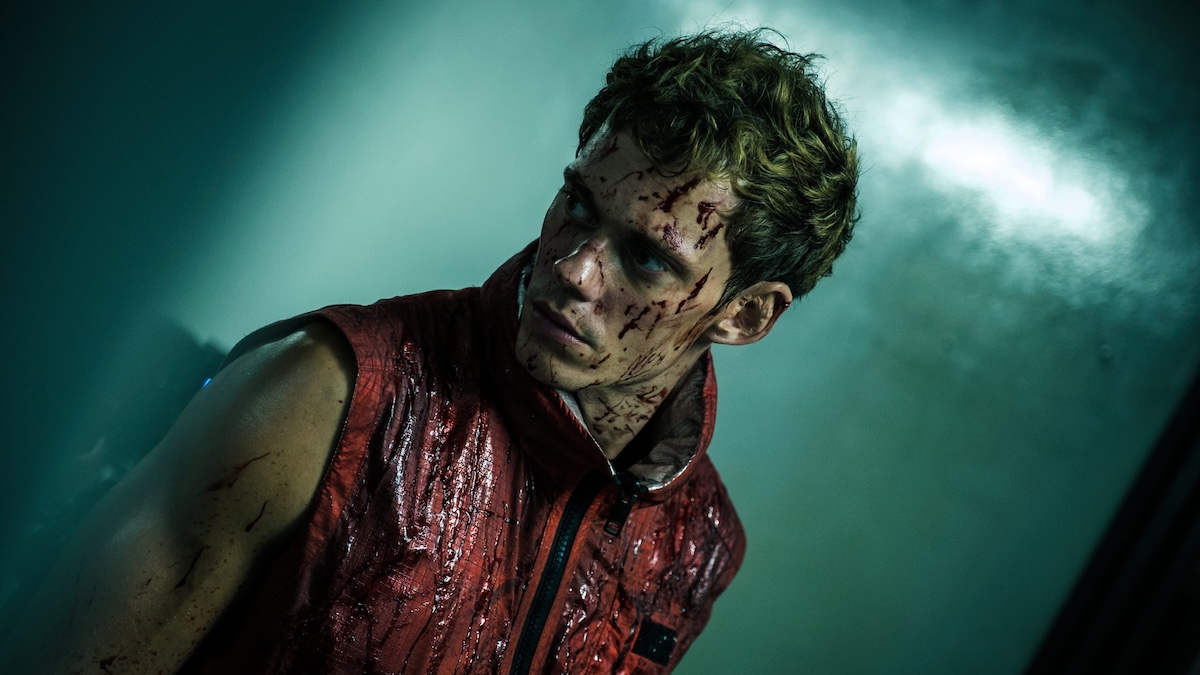
It’s a gory action brawl starring Bill Skarsgård (John Wick: Chapter 4) as Boy, a deaf-mute whose internal monologue is voiced by H. Jon Benjamin (a veteran of animated sitcoms including Bob’s Burgers and Archer). The voice is one that Boy heard while playing street fighter games in an arcade with his little sister. In the present, she appears to him as the spectral embodiment of his lost innocence. His disability, meanwhile, is the result of an assassination by Hilda van der Koy (Famke Janssen), an unhinged matriarchal dictator, who murdered his family.
Hilda’s sister, Melanie (Michelle Dockery), and brother, Glen (Brett Gelman), run the Culling, a televised annual event where dissidents and their families are rounded up for execution under the watchful eye of host Gideon (Sharlto Copley). His dandified get-up reminded me of the haunting plastic and rubber cowboys from Primus’ video for “Wynona’s Big Brown Beaver”. (Side note: the Wikipedia page for this film seems very confused about the relationships within this fictional family and isn’t recommended as a reference point.)
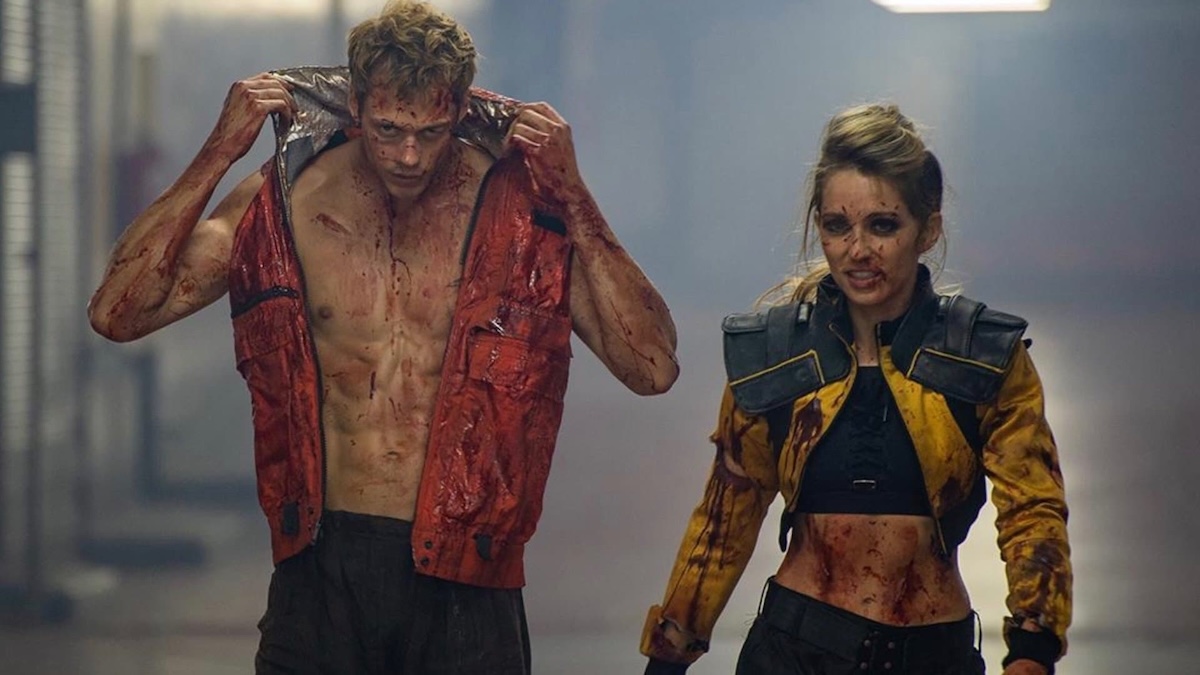
Boy survived his execution and was subsequently raised by “the shaman” (Yayan Ruhian), who taught him martial arts. Then, upon witnessing Gideon conduct a messy Culling that descended into a slaughter of men, women, and children, Boy sets out for revenge.
The word “arcade” has become unmoored from its original association with bulky machines that required you to leave the house. Today, it refers more to a particular aesthetic. Our era is producing games that border on photorealism, if not achieving it entirely. Consequently, storytelling within games is gravitating towards realism. This is the natural progression of any niche artistic genre. Just as the crime novel evolved from tales of Lords and Ladies and “Plans of the Manor” in the 1920s to the gritty, socially aware thrillers we see today, so too has the video game progressed. It has moved from Teenage Mutant Ninja Turtles and Sonic the Hedgehog to titles like The Last of Us and Heavy Rain.

When you think of an “arcade” game, bright colours, stereotypical characters, trope-laden fantasy settings, and simplistic storylines come to mind. (One of my favourite humour writers, who goes by the pen name ‘Seanbaby’, created a mobile game called Calculords, whose plot description satirises this: “It was beautiful Earth Day in star year 29XX. Suddenly: HATE BIT! Everything is destroy. You are Last Star Nerd. Only you are enough to destroy danger menace of HATE BIT.”) Boy Kills World aligns with this aesthetic in its sense of place and character. It’s set in one of those video game cities that are part Asian marketplace, part Western cityscape, with ancient Eastern mysticism juxtaposed against cyberpunk. There’s no real racial homogeneity or connection to a wider world outside itself. In a way, the film feels like a video game movie, but without the video game.
Some critics have marked down Boy Kills World for its lack of satirical weight in its dystopian setting. It’s not trying to make a grand social statement, à la The Hunger Games (2012) or Battle Royale (2000). It thrives on its fight choreography, anarchic humour, over-the-top gore, and colourful, if somewhat shallow, world-building.
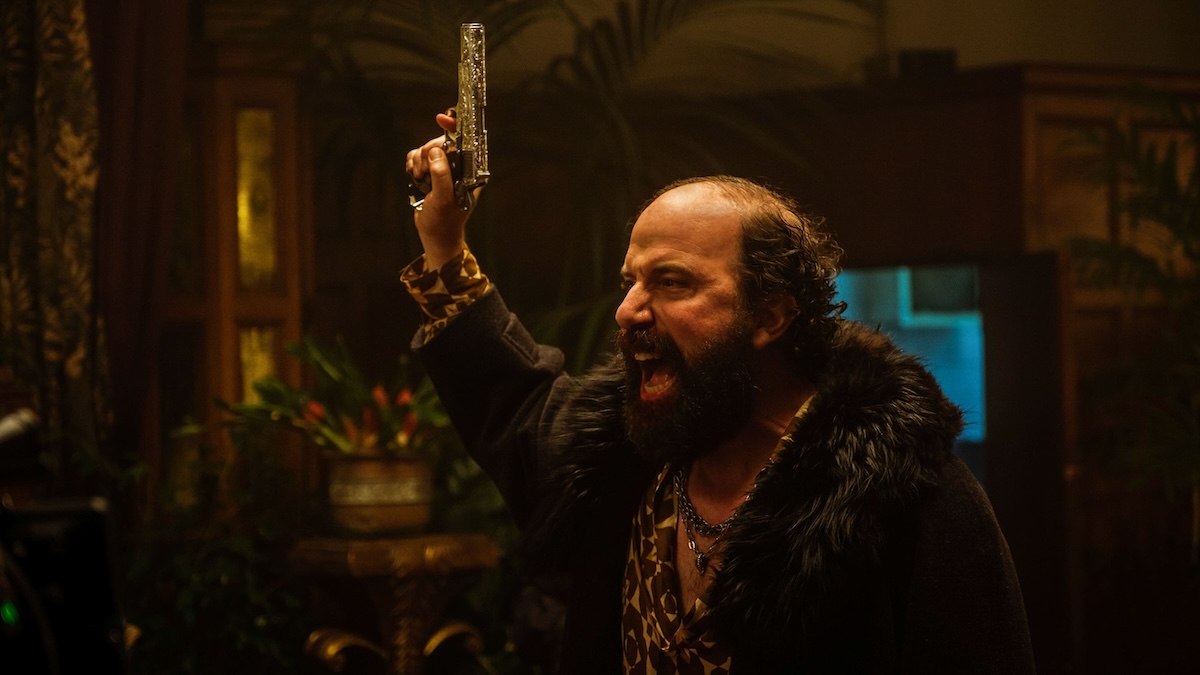
Skarsgård, at 33, might seem a little old to play Boy, but his youthful looks, with doe-eyes and tousled hair, lend him the necessary innocence. He also boasts a remarkably toned physique, typical of action heroes. This again makes me wish directors would explore the erotic potential of their male leads in such films, just as they do with their female counterparts. Years of skimpy metallic bras and thongs surely warrant a bit of the same for the chaps.
In addition to his physical attributes, Skarsgård demonstrates excellent comedic timing and the ability to convey a full character through facial expressions alone. He injects considerable charm and lightheartedness into what is essentially a silent film performance. Unlike, say, Nicolas Cage’s silent role in the abysmal Willy’s Wonderland (2021), this isn’t merely an ego trip and a quick payday for Skarsgård—a way to get paid for minimal effort. Boy isn’t a “well-rounded” character, as the mainstream genre doesn’t allow for such development in the traditional sense. However, he is undeniably a character, and his success hinges on the vibrancy of his caricature. The ending leaves the door open for sequels, although its financial performance suggests this might be unlikely. Projected to make $2-3M during its opening weekend, it debuted with a disappointing $1.6M, taking only $819,000 on its first day. This lacklustre showing can likely be attributed to stiff competition from Luca Guadagnino’s Challengers (2024).
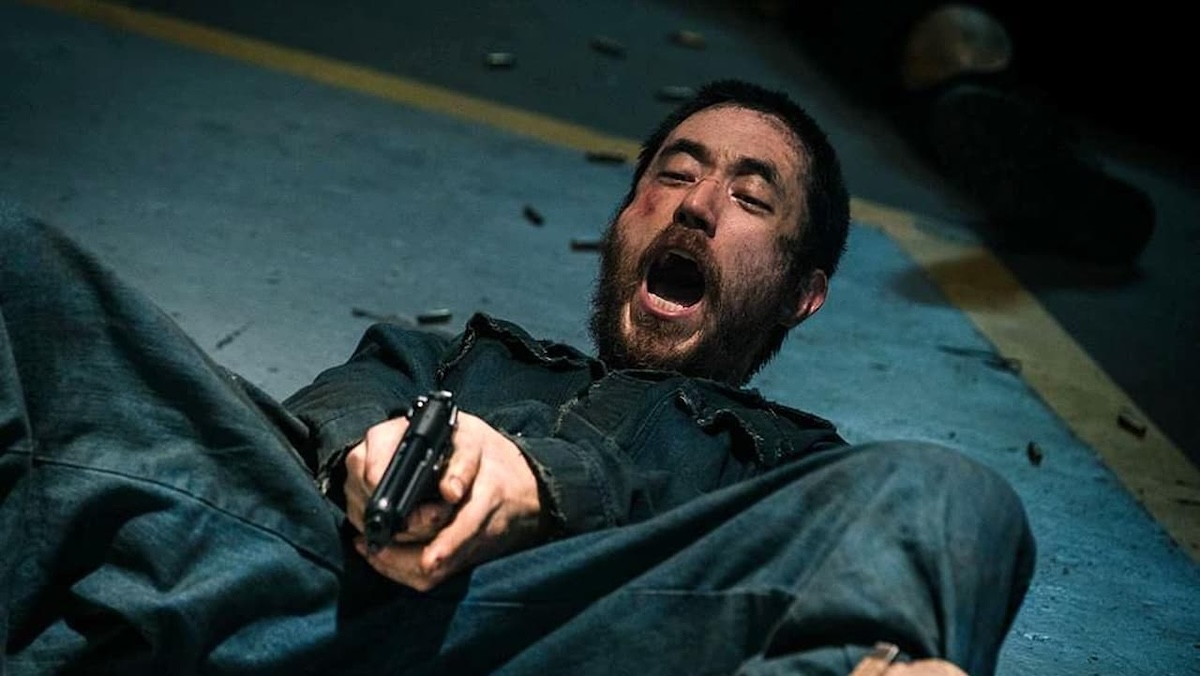
This does feel like the sort of B-movie that, in the days of DVDs, you’d find in bargain bins or included on themed multipacks (“5 Cool Sci-Fi Films in One!”). That’s not a criticism so much as observing its ambition and appeal. Movies aren’t like video games, where you can just rejig the elements and make something entirely new to sell to customers (“It’s the Mario characters and settings, but built around go-kart racing!”). You need a new story, even if it’s a basic one, every time. Hence why the Rocky films ended up introducing robotics and every franchise slasher eventually goes to space.
Boy Kills World, despite its ‘video game movie without the video game’ feel, does have enough plot to see it through its runtime and justify all the fun set-pieces, fights, and gore. It’s a relentlessly violent film, reminiscent of post-ironic, Pop Art satires like Kick-Ass (2010), which launched this kind of movie. If you enjoy that sort of thing, you’ll likely enjoy this too. However, where Kick-Ass was a fresh and innovative satire of the tropes, Boy Kills World feels more like a disposable rehash of them.
GERMANY • SOUTH AFRICA • USA | 2023 | 111 MINUTES | COLOUR | ENGLISH

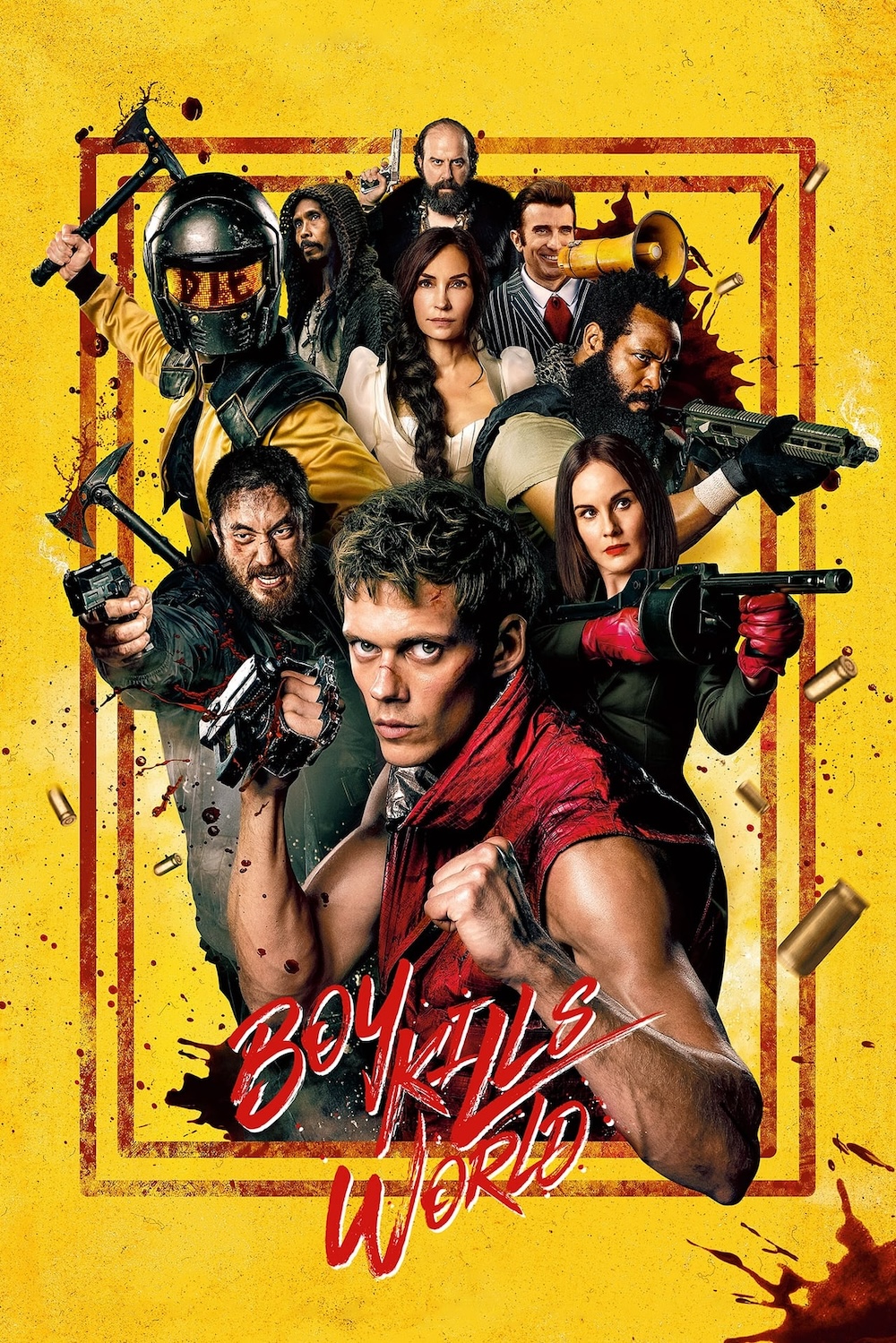
director: Moritz Mohr.
writers: Tyler Burton Smith & Arend Remmers (story by Armend Remmers & Moritz Mohr; based on the short film by Armend Remmers & Moritz Mohr).
starring: Bill Skarsgård, Jessica Rothe, Michelle Dockery, Famke Janssen, Sharlto Copley, Brett Gelman, Isaiah Mustafa, Andrew Koji & H. Jon Benjamin (voice).
